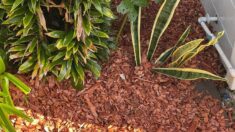
Have you ever looked at your neighbors’ lush yard and green lawn, wondered how they manage to keep it looking so good?
At the same time, no matter how hard you try, for example, watering frequently, mowing often, perhaps even fertilizing every now and then, your lawn still appears worn out, patchy, or lifeless. It is so infuriating when you have already spent time and money, and you are still not happy with what you get.
The reality is that a lush, healthy yard doesn’t just happen. It takes more than the basics to unlock the full potential of your lawn.
Luckily, with the proper tactics and a bit of insider information, you can turn your yard into the lush sanctuary of your dreams.
Here are five simple secrets that make all the difference:
1. Feed Your Lawn the Right Way and at the Right Time
One of the biggest mistakes people make is treating lawn fertilization like a standard, one-size-fits-all chore. But your lawn is a living, breathing ecosystem, and it requires the right nutrients at the right time.
Spring and fall are important times of the year when grass is actively growing and will take food more readily. However, just dumping fertilizer without knowing your soil can be the equivalent of throwing money away or causing harm that’s hard to undo.
Begin by having your soil tested. That way, you know what is lacking – be it nitrogen, phosphorus or potassium. Second, choose a slow-release, balanced fertilizer for your specific lawn requirements.
Used in the right way, fertilization secures roots, enhances color, and provides the plant with an added layer of protection to sustain a full growing season.
2. Master the Art of Proper Watering
Watering sounds like the easiest thing to do, but most people do it wrong. Some homeowners overwater, underwater, or water at the wrong time of day. All leading to shallow root systems, fostering fungi, or simply wasting resources. The trick is consistency and timing.
Water deeply, but infrequently that it amounts to about an inch per week, including rainfall. This induces your grass to develop more extensive roots, making it more drought-resistant and more pleasing to the eye.
Also, try to water in the early morning hours, ideally between 6 a.m. and 10 a.m., when temperatures are cooler and winds are calmer. This enables water to penetrate easily without evaporating quickly or creating conditions where diseases can thrive.
3. Aeration: The Hidden Hero of Lawn Health
If your yard feels compacted, or you see puddles after a rain, your soil may be suffocating. Dried, compacted soil prevents water, nutrients, and oxygen from soaking into the grassroots.
That’s where aeration comes in.
Aeration is the process of pulling out tiny chunks of soil so your lawn can breathe again. It allows water and nutrients to get down to the roots, creating stronger roots and thicker grass.
The best time to aerate is usually early fall or spring. This step is most crucial for yards that get a lot of foot traffic or have clay-heavy soil. When combined with overseeding, aeration creates a great environment for new grass growth.
3. Mow Smarter, Not Shorter
It may look like cutting your grass short will result in having to cut it less frequently, but this method can damage your lawn severely. Scalloping, or cutting grass too short, leaves the soil vulnerable to sunlight damage, promotes weed growth, and puts pressure on the grass.
Instead, aim to mow at the correct height for your grass type. Most lawns do best when mowed to a height of 2.5 to 4 inches. Taller grass shades the soil, retains moisture better, and grows deeper roots. Additionally, always keep your mower blades sharp to make clean cuts that heal quickly and avoid disease. Leave clippings on the lawn—they act as natural mulch and return nutrients to the soil.
It’s also worth switching up your mowing pattern every time. This stops compacting soil in the same spots and makes the grass grow more upright. Never mow wet grass because it’ll create uneven cuts and spread lawn disease.
However, if you find doing all this challenging, hire local yard care professionals who have experience and expertise working in your area. For instance, if you reside in Pike Road, you must hire certified and experienced Pike Road yard care pros.
5. Don’t Ignore Weed and Pest Prevention
Even if you have got everything else right, pesky weeds and lawn pests can ruin your hard work in no time. Weeds compete with grass for nutrients and water, while pests like grubs can chew away at the root system, creating brown patches and thinning grass.
Prevention is always more effective than trying to fix a major infestation. Use a pre-emergent weed control product in early spring to stop weeds before they sprout. Keep an eye out for signs of lawn pests, such as wilting grass, increased bird activity, or irregular brown spots.
If necessary, get in touch with a lawn care professional to apply safe and effective treatments that won’t harm your grass or the environment.
So creating a lush yard doesn’t require magic, just a deeper understanding and learning of what your lawn needs and when.


